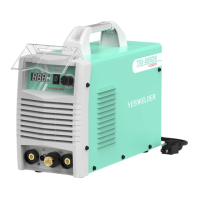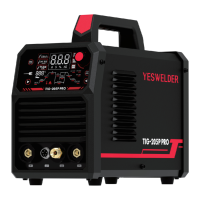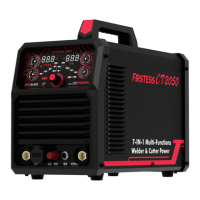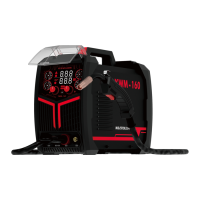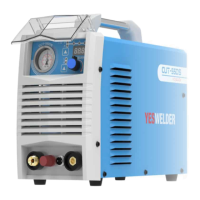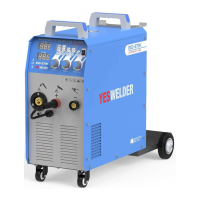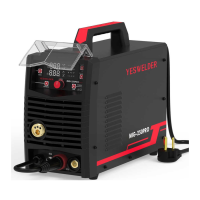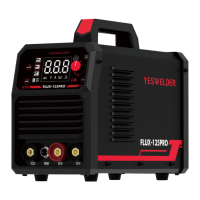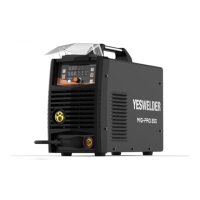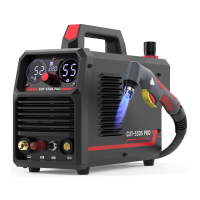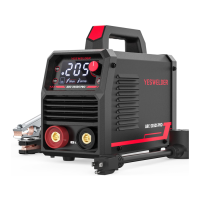Do you have a question about the Yeswelder TIG-200P and is the answer not in the manual?
Essential safety practices for operating and maintaining welding equipment.
Explanation of WARNING and CAUTION indicators used in the manual.
Procedures for checking the packing box and equipment for damage immediately after delivery.
Legal warnings regarding diesel exhaust and welding fumes/gases known to cause cancer or birth defects.
General warnings about arc welding dangers and essential precautions for users and bystanders.
Specific safety guidelines for operating and maintaining engine-powered welding equipment.
Information on potential health risks associated with EMF exposure during welding operations.
Detailed instructions on preventing electric shock, including insulation and safe practices.
Guidance on protecting eyes and skin from harmful arc rays using proper shielding.
Warnings about toxic fumes and gases, and necessary ventilation and respiratory protection.
Measures to prevent fires and explosions caused by welding sparks, spatter, and flammable materials.
Precautions for handling and storing compressed gas cylinders to prevent damage and explosions.
Safety guidelines for installation and grounding of electrically powered welding equipment.
Overview of the TIG AC/DC inverter welder, its technology, and common applications.
Lists the main characteristics and features of the welding machine.
Details on the benefits of advanced IGBT inverter technology for performance and efficiency.
Explanation of the advanced control technology for improved welding performance and applications.
Highlights the machine's design features, including shape, materials, and insulation.
A table listing detailed technical parameters for the TIG-200P ACDC welder.
Identifies and describes the main components of the welding machine's front and back panels.
Detailed explanation of the operating panel's display, keys, indicators, and adjustment knob.
Description of the automatic parameter saving function and its behavior.
Describes protection functions indicated by digital meter codes like A-1, XX C, and A-0.
Explains automatic foot pedal identification and the voltage output indicator.
Provides essential steps and precautions for installing the welding machine safely and correctly.
Step-by-step instructions for connecting the TIG torch, earth cable, and gas hose.
Instructions for connecting the electrode holder and work clamp for STICK welding, including grounding.
Details on polarity selection, anti-sticking function, and setting welding current for STICK mode.
How to select HF TIG mode, 2T/4T/SPOT modes, and set pre-flow and welding current.
Guides on setting initial current, upslope time, welding current, downslope time, pilot arc, and post-flow time.
Instructions for selecting pulsed TIG mode and adjusting parameters like pre-flow, initial, upslope, peak, base, downslope, and pilot arc currents.
Setting post-flow time for Pulsed TIG and explaining 2T, 4T, Foot Pedal, Work, Alarm, and Spot welding modes.
Reference table for TIG welding parameters on titanium and its alloy, including plate thickness and current.
Guidelines for safe welding in various environmental conditions, including humidity, temperature, and air flow.
Guide to common malfunctions, their causes, and suggested solutions for the welding machine.
Instructions for handling the equipment with care during transportation to prevent damage.
Specifies temperature, humidity, storage life, and location requirements for storing the equipment.
Records the version history of the manual, including descriptions, versions, and dates.
| Output Current Range | 10-200A |
|---|---|
| Frequency | 50/60Hz |
| Duty Cycle | 60% at 200A |
| Protection Class | IP21S |
| Power Factor | 0.93 |
| Efficiency | 85% |
| Input Voltage | 110/220V |
| Type | TIG/Stick |
| Input Current | 30A |
